新渡戸稲造 生誕150年記念 第1弾「世界を結ぶ『志』~新渡戸稲造の生涯~」
- 2022/04/01 14:39

目指すは、大阪万博のメインステージ!! 参加者募集中!!
笑顔でハッピーボイスの大阪万博バージョン登場!
ベトナムのダナン工科大学・ダナン外国語大学×日本の産官学オンライン交流会にて初披露されました。
200名以上の人たちが参加する大きなイベントでしたが、オープニングで、この『笑顔でHAPPY VOICE』の
プロモーション動画が流れたので、皆さん、リラックスできたようでした。
出演は、国際紅白シンガーズ(坪内美樹さん、ヤオさん、タオさん)とNINJYA役はなんと、研修生をサポートする協同組合共栄の宮永社長さん。総合演出は音楽家、ラジオパーソナリティーのバンディ石田さんです。
日本語を勉強中の人でも歌いやすい曲ですので、今年の国際紅白歌合戦でもみんなで歌いたいですね!!
HAPPY VOICEのおまじない。♪
あ・・ありがとう
い・・いいね
う・・うれしい
え・・エキスポ(EXPO)
お・・おおさか(大阪)
心がつながる HAPPY VOICE!!
笑顔でハッピーボイス♪EXPO2025
編曲 田中裕平(古民家100年スタヂオ)コーラス TARA
レコーディング スタジオ246OSAKA エンジニア 菅野裕太
撮影協力 日本殺陣道協会 会長 八木哲夫
国際紅白歌合戦(大阪開催)では、ボランテイアや国際紅白シンガーズのメンバーを募集しています。
こちらから登録してくださいね。
(歌いたい、踊りたい人)
(ボランテイア、みんなで一緒に歌いたい人)
外務省・大阪観光局後援・国際紅白歌合戦 公式HP https://www.irws.org/

やる気があれば誰でも出来る通訳ボランティアガイド
学生時代に外国人の人たちを案内して学んだこと
学生や若者が通訳ボランティアガイドをするメリット
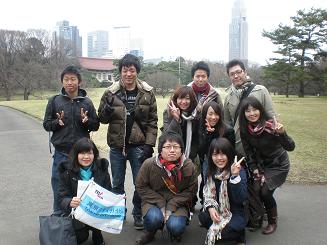
1:外国語を話すことに自信がつく⇒語学は度胸だ。
2:外国人の視点で日本の文化に触れることが出来る。
⇒日本の良さを再発見できる。
3:案内している人と相手の国の文化とも比較しながら、
深くて意味のあるコミュニケーションをすることが出来る。
⇒異文化に寛容な気持ちを育る。
4:自分がした行為がとても感謝される。感謝される喜びを感じ取れるようになる。
⇒人間の本当の喜びを感じられる。
5:言葉のコミュニケーションが十分でない分、より相手が
何を求めているのかを理解しよう努力することが出来る。
⇒相手への思いやりの気持ち。
高度なコミュニケーション能力が身につく。
↓↓↓
通訳ボランティアガイドは『生きた語学力』・『思いやりの心』・『コミュニケーション能力』と社会人として必要な基礎的能力が総合的に養われるとても有意義な体験である。
↓↓↓
学生通訳ボランティアガイド勉強会
通訳ボランティアガイドに興味のある方は①お名前②年齢③住んでいる都道府県④学生の場合は学校名⑥英語あるいはその他使える外国語のレベル等を記入の上
までご連絡ください。詳しい資料と説明会のご案内をさせていただきます。 (日本人学生・留学生・学生OBOGの方々大歓迎です!!)
.jpg)
この度、4代目のGC通訳ボランテイアのリーダーになりました。明治大学2年の外池英彬(写真左から2番目)です。皆さんは通訳ボランティアと聞いて、どのようなことを思い浮 かべますか?英語ができなければならないという考えが先だっていませんか?しかし、“できる人”になりたいという方がいるのも事実ですよね。想像してみて ください、自分が流暢に話している姿を。私たちと一緒に通訳していませんか?文字どおり世界が変わるでしょう。
3代目のGC通訳ボランテイアの元リーダーの、慶応3年の谷口毅(写真右端)です。皆さんの中には、「海外に行きたいけど、お金がない!」という方が多いのではないでしょうか?ズバリ、この活動の魅力は東京にいながら気軽に世界へ旅行した気分になれることです。
通訳をしながら、本では身に付けられない他国の文化を「生の声」を通じ学べる一方で、日頃は無意識のまま享受している日本文化について相手に表現することが求められる経験はまさしく海外に行った時と同じような感覚です。
また活動後も続く海外の方や通訳メンバー同士との交流もこの活動を続けていく中での楽しみの一つです。
「ボランティア」でありながら自分が本当に楽しめるこの活動にぜひ一度参加してみて下さい!
通訳ボランティアガイドの活動の流れとポイント
GC学生通訳ボランティアガイドの公式サイトをリニューアルしました。
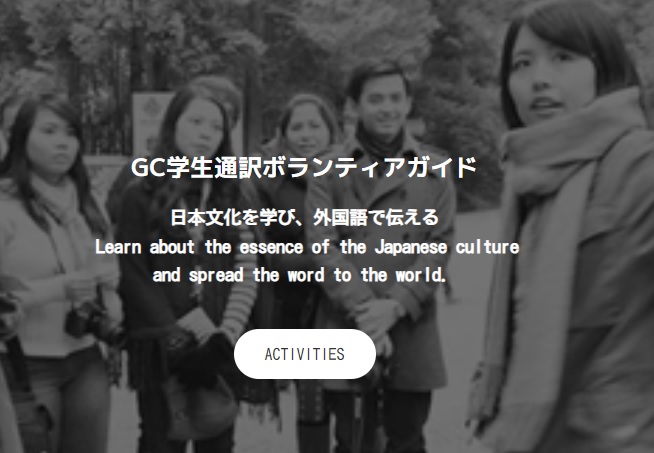
https://gc-volunteer-guide.jimdosite.com/
大阪でも、大阪城,豊国神社の英語での案内を中心とした学生組織の立ち上げ準備中です。関心のある方は、
1:お名前 2:学校名 3:年齢 4:英会話学習経験等 をお書きの上、
globalcommunity21@gmail.com までご連絡ください。定期勉強会のご案内をさせていただきます。

城南地域で30年 12,000件以上の豊富な管理専任実績。 ㈱シテイ・ハウジング 入社3年目の中国人社員、 張栄慧さんにインタビューしました。
大阪の学校を卒業して、東京で働きたいと仕事を探していた張さん。
とてもやりがいのある仕事に出会ったとやりがいを感じているようで安心しました。
10月に宅建の試験にチャレンジします。
先輩の呉さんはすでに宅建に合格しているようで、今年はその上の不動産管理系の試験を目指して頑張っているようで、
いい先輩がいると後輩も育っていきますね。
https://cityhousing.co.jp/ ( ㈱シテイ・ハウジング)
https://ssl.citymonthly.jp/ (マンスリー事業部)

留学生インターンシップ経験者がまたまた、大活躍!!
中国語圏、英語圏のビジネスパーソンをサポート

民泊特区でもある太田区の地元ではおなじみの不動産会社、シテイー・ハウジング。そのマンスリー事業部で、働いている呉長健(ゴチョウウケン)さん(写真左)と4月から正社員になった、張 栄慧(チョウエイケイ)さん(写真右)を訪問。
呉さんは、日本賃貸住宅管理協会(JPM)主催の留学生インターンシップの経験者。昨年、城西大学を卒業し、シテイー・ハウジングに入社。
先輩の中国人社員がやめることになり、短期間で業務の大部分を引き継いだ。そのお陰もあって、日本語特に敬語でのやり取りもとても自然になった。
昨年、就職活動に苦労している頃を知っているが、この一年間で驚くほど、自信をつけて、立派に業務を任される社会人1年生になっていた。呉さんは母国語の中国語だけでなく、英語も流暢に話すので、中国語圏以外の外国人にも英語で対応している。これからは宅建の資格に挑戦して、不動産のスペシャリストを目指す。
呉さんたちの活躍で、この1年間で、シテイーハウジングにも、外国語での問い合わせも大幅に増えたという。中国語と英語を駆使してこの調子で頑張ってほしいと思う。
その呉さんのサポート役で、新たに入社したのが、京都情報大学院大学で、ITビジネスを学んでいた、張さん。京都情報大学院大学は、日本で初めてできたコンピューターの専門学校、京都コンピューター専門学校が作った大学院で、多くの留学生もITビジネスを学ぶ。卒業生は、そのITの知識を生かして、IT業界のみならず、旅行業、不動産業、大手メーカー、商社などで活躍している。
張さんは、どうせ就職するなら東京でと、学校卒業後は、東京に引っ越し、地道に就職活動を続けた。少し、のんびりしてるけど、とても人懐っこく、社交性もあるので、それも評価され、また、業務上、ITの知識も必要と採用された。
呉先輩から社会人の基礎をしっかりと学んで、多くの外国人の人たちの住まいのサポートをしてほしい。
最近は留学生の就職率も確かに上がっているが、日本人学生同様に、数年で退職するものも多い。実は、私も、元留学生の転職の相談をよく受ける。彼らの話を聞いていると多くは、職場に心を許して相談する相手がなく、自分の気持ちが理解されていないと、不平がたまることがあるようだ。
グローバルコミュニティーが係わって、不動産業界で働く外国籍の社員も、どんどん増えてきた。しかし、そのほとんどは、社内では圧倒的に少数派で、同じ目線で相談できる人がいないのが現状。
グローバルコミュニティーでも、その人たちが、お互いサポートしていけるようなコミュニティーを作る準備をして、一年でも長く、彼らが日本で活躍してくれるような環境を作っていきたいと思う。
㈱シティ・ハウジングの社会活動

㈱シティ・ハウジングは、大田区を本拠地とするプロバスケットチーム『アースフレンズ東京z』のオフィシアルスポンサーを通して、バスケットで世界を目指す若者を応援しています。
選手との交流や、バスケット教室やスポンサー優待で観戦のチャンスもあります。
アースフレンズ東京z 公式サイト
http://eftokyo-z.jp/
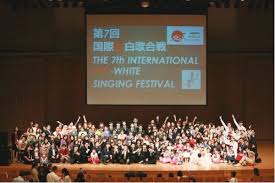
国際紅白歌合戦への協賛
外国人コミュニティーとの交流を大切に!!
『外国人は日本語で、日本人は外国語で歌う』歌の国際交流イベント『国際紅白歌合戦』を協賛しています。

Eye-opening possibilities of Atomic hydrogen water
Hydrogen-rich water, especially Atomic hydrogen water, has received media attention for its health benefits. We interviewed Professor Shirahata at Kyushu University who is at the frontline of the research in this field.
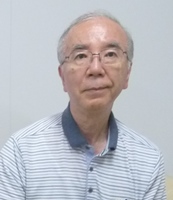
Sanetaka Shirahata, professor of Bioscience and Biotechnology at Kyushu University
Shirahata has studied the beneficial effects of Atomic hydrogen water for over thirty years. He delivered a series of lectures and participated in a collaborative research on Atomic hydrogen water at Karolinska Institutet in Sweden.
Q: What made you think of studying "Atomic hydrogen"? What is the significance of this?
A: I took over the study from the previous researcher at my institute. There are not so many researchers who study water probably because it is the most abundant substance on earth and always within our reach.
Water is quite important for cells. I believe water has healing effects like "the water of Lourdes", and my belief kept me work on the study of "Atomic hydrogen" for a long time.
Recent studies show that Atomic hydrogen water increases cell activation and has a positive impact on health. It may be introduced as one of natural remedies following the shift towards integrated care.
I am particularly interested in Atomic hydrogen, which acts as the antioxidant defenses of the cancer cell. The study is still new and requires further research. More studies have been done for molecular hydrogen, but this is not effective for preventing cancer. On the other hand, Atomic hydrogen acts as a reducing agent and thus is lethal to cancer cells. If Atomic hydrogen can be taken into the body, that will be a revolutionary change in the field of cancer treatment. Medical practitioners are concerned about side effects of chemotherapy, and the increasing shift towards integrated care is seen in the US and Europe where conventional medicine is highly developed. Introduction of Atomic hydrogen water would be well appreciated in the field of Clinical Oncology.
Q: I believe Atomic hydrogen water is quite important. How come there are not that many researchers who study this field?
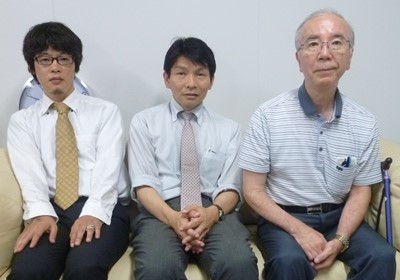
right side Prof. Shirahata
A: "The water of Lourdes" is one of the well known healing water, but there is no scientific explanation for the beneficial forces concentrated in the water. It may be hard to follow the idea that Atomic hydrogen water increases cell activation and prevents cancer, because water is an abundant substance. It's been more than 15 years since the importance of natural treatments is highlighted in the US, but I don't think the idea is not recognized by the general public in Japan. We should cooperate with medical institutions and organizations to advocate the effectiveness of Atomic hydrogen water. Once the general public deepens their understanding of water, researchers will receive more funding and have enough budget to keep their study.
Q: What did you present at the home of the Nobel Assembly, Karolinska Institutet in Sweden? We'd like to know more about Atomic hydrogen water which has positive effects not only on the human body but also on plants.
A: I was invited to Karolinska Institutet by Sten Orrenius, professor emeritus, in 2007, where I talked about the health benefits of Atomic hydrogen water. I have reported the progress of the study at the seminar in 2009. I believe the study of Atomic hydrogen water for cancer prevention was well acknowledged. In 2013, we presented a hypothesis, "Water as a source and stock of hydrogen and electron energies". If this theory is scientifically proven, it becomes clear that water stores energy and is deeply connected to life energy. This will also prove another hypothesis that water is a living substance that has memory.
Atomic hydrogen water has positive effects on plants and soil as it increases cell activation. It will help reduce pesticides use if Atomic hydrogen water is effectively used. This means we need to change our approach of our study to broaden the use in medical and agricultural fields, to make the most use out of Atomic hydrogen water. This need of the change in the current system should be understood by everybody including those who are not expert in science, medical and agricultural fields. Our mission is to introduce healthy and eco-friendly lifestyle that encourages to minimize the use of conventional medicine and pesticides.
It is challenging to keep the study of water because results of its study could possibly change the history of science and medical bioscience. Scientists need to be courageous enough to reveal a new fact that goes against our common knowledge. A number of medical practitioners and scientists feel that conventional medicine and materialism are already cliché. We need a system that supports scientists like Prof. Shirahata who challenges the new field of study.

注目の原子状水素『還元水素水』、驚くべき可能性!!
飲料水として、今、健康にいいと話題の水素水。その中でも、原子状水素(活性水素)を多く含んでいる『還元水素水』に注目が集まっている。その分野の世界的権威、九州大学大学院の白畑教授にお話をお聞きしました。
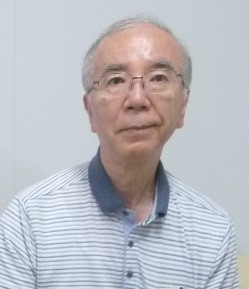
白畑 實隆(さねたか)教授 (九州大学大学院農学研究院)
還元水(水素水)研究の世界的な権威。還元水素水の健康改善への影響などに関する研究を30年以上にわたり行う。スエーデン・カロリンスカ研究所(ノーベル生理学医学賞を決定する機関として良く知られる)でも還元水関連の講演、共同研究なども行う。
Q:どうして、『還元水水素水』の研究をしようと思ったのですか?またその重要性は何ですか?
A:元々は、前任の研究者がいまして、その人の研究を受け継ぐ形で、研究を始めました。
実は、『水』を研究している研究者はそんなに多くないんですね。あまりに当たり前の存在になっているので、改めて『水』に関して掘り下げて研究する人が少ないんだと思います。
しかし、細胞にとって水は大変重要なものですし、私は、『ルルドの泉』のように水が健康改善に大きな影響があるという思いがありましたので、長年『還元水素水』の研究を続けています。
現在では、少しづつですが、医療の現場でも、還元水素水が、細胞を活性化し、多くの健康改善事例も報告されて来ていますので、今後は、副作用のある薬を使わない統合医療の考えが進むにつれ、導入が進んでいくと思われます。
しかし、私が特に注目しているのは、がん細胞の抑制にも効果のある原子状水素です。この分野はまだまだ、研究の余地があります。研究が比較的進んでいる分子状水素では、還元力が弱く、がん細胞を抑制するまでの力がありませんが、原子状水素は、非常に還元力が強く、がん細胞にも有効だと証明されています。夢のような話ですが、原子状水素をそのまま、多量に体内に取り組むことが出来れば、がんの治療は革命的に変わる可能性があります。抗がん剤の副作用は、現場の医師よりも多くの問題点が指摘されており、西洋医学の先進国といわれる、アメリカやヨーロッパでも、出来るだけ薬に頼らない統合医療に傾倒する医師が増えてきているといわれています。原子状水素を多量に含む還元水が開発されれば、がん医療の現場でも大いに歓迎されるでしょう。
Q:大変重要な研究だと思いますが、どうして、還元水の研究をしている研究者は少ないのですか?
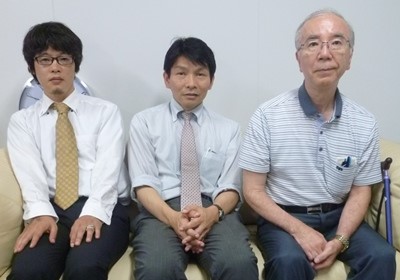
左から濱崎助教・筆者・白畑教授
A:水の中には、体にいいといわれる『ルルドの泉』のように、広く認知されている水もありますが、まだ、どうして体にいいのか科学的な解明には至っていません。また、水は、あまりにありふれたものなので、還元水が細胞を活性化し、強いては、がん細胞の抑制に確実に効果があるといわれても、ピンとこないところもあると思います。出来るだけ薬に頼らない統合医療の重要性がアメリカで叫ばれ、15年以上になりますが、まだまだ、日本では一般の人たちに認知されているとはいえません。今後も還元水の重要性を医療機関や関連団体とも協力しながら、啓蒙していくことも重要です。世間一般での『水の研究』への重要性の理解が高まれば、研究費用も集まりやすくなり、研究者も安心して研究に没頭できると思います。
Q:ノーベル生理学医学賞の決定機関としても有名なスエーデン・カロリンスカ研究所でも研究発表されていると聞きましたが、どのようなことを発表されましたか?また、還元水は、人体だけでなく、農作物などにもとてもいい影響があると聞きましたがその点についてもお聞かせください。
A:カロリンスカ研究所には、2007年に初めて、Orrenius名誉教授(元医学部部長)に招待され、『健康にいい還元水』の研究の話をさせていただきました。また、2009年も招待セミナーで、研究の進捗を報告させていただきました。特に原子状水素のガン抑制の研究の重要性を評価してもらえたと思います。また、2013年は、挑戦的な仮説として『液晶水―意識エネルギー相関仮説』を提唱しました。この仮説の証明が出来れば、水がエネルギー物質で、生命エネルギーにも密接に関連することが明らかになります。つまりは、水が意識を持った生命体ということの証明になります。
もちろん、還元水は、細胞を活性化するので、農作物や土壌にも大変いい影響を与えます。還元水を有効に使えば、農薬を大幅に削減することも出来ますので、応用範囲は大変広いですね。しかし、そうなると社会的なインパクトも強くなり、医療分野でも、農業分野でも今までとは違うアプローチが必要で、科学、医療、農業関係者だけでなく、専門を越えた連携や、一般市民の世論の意識形成も必要になってきます。そのためにも、薬剤や農薬の使用に頼らない『自然環境にやさしい健康な生き方』を一般の人たちにももっと、広げていくことが大切だと思います。
『水の研究を続けるのは並大抵ではない』その理由のひとつは、その研究の結果が、既存の科学や医学の常識を大きく書き換える可能性があるからだ。今までの常識を覆す結果を発表することは、科学者にとっても勇気のいること。しかし、そのような重要な問題に取り組まなければ、社会を変革するような大きな研究は出来ない。西洋医学一辺倒の考え方や物質科学万能主義が曲がり角に来ていることは、多くの医学者、科学者が感じている。白畑教授のように勇気を持って、新しい研究に挑戦する研究者を支援する体制が今以上に必要だ。 (グローバルコミュニティー 編集長 宮崎計実)
*ルルドへの旅・祈り*
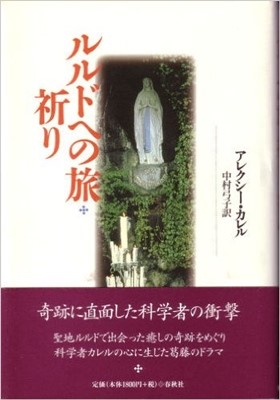
『目の前の事実から目をそらしてはいけない』
“ルルドの奇跡” と ノーベル賞学者 アレクシー・カレル博士
後にノーベル生理・医学賞を受賞されたカレル博士は、1902年、29歳のときルルドへの巡礼団に随行医師として参加され、彼自身「もう助からないだろう」と診断した末期の結核性腹膜炎の患者が数時間のうちに治癒していく事実を目の当たりにした。
皮膚病、婦人病、視覚障害、聴覚障害、知能障害など様々な治癒が数多く報告されているだけでなく、切断しなければならないと宣告されていた足の骨の癌の治癒、脊髄を損傷し車椅子生活だった人が、ルルドに行って歩けるようになったという例もある。
『ルルドへの旅』は、カレル博士が残された文書の中から、自らの体験を“ラレック”という名の医師の体験談として綴ったものだ。
実際に奇跡的な治癒を目の当たりにし、“ラレック”は、次のように述べている。
「奇跡の事件にまきこまれたのは、確かに非常に具合の悪いことだった。しかし、見た以上は実験室での実験の場合同様、観察結果を変えるわけにはいかなかった。新しい科学現象だろうか。それとも神秘神学の領域に属する事実なのだろうか。これは非常に重要な間題だった。なぜならこれは、単なる幾何学の定理を認めるかどうかというような間題ではなく、人の生き方そのものをも変えうるような問題だったのだから。」
(アレクシー・カレル (著), 中村 弓子 (翻訳) 出版 春秋社)

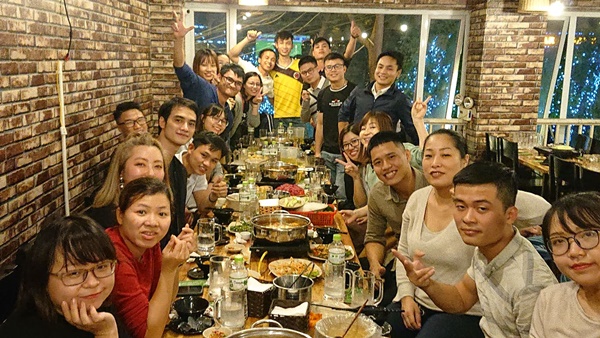
(右から5番目が瀬口さん)
‐日本語教師になったきっかけ‐
学生時代から
海外や英語に興味があり、通訳ボランティア活動などする中で、外国人と関わる仕事がしたいとずっと思っていました。
日本国内で大学、メーカーや外資系企業も経験しましたが、ワーホリでニュージーランドに行った際、日本語教師をしている方に出会い、自分が学生のころから思い描いていた働きかたができるのではないかと思いました。
日本にとどまらず、海外でも自由に働けて、ずっと続けることができる日本語教師に惹かれて、
帰国後、すぐに日本語教師育成講座に通い始めました!
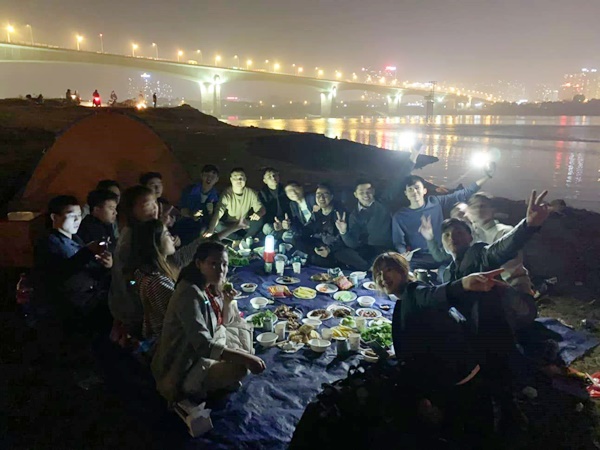
‐日本語教師のやりがい‐
学生たちの成長をいちばん近くで感じられることです。人材育成の観点から、
本気で日本で働きたい学生たちを日本語0の状態から日本で生活できるように生活指導までもするので、彼らが成長していく姿を見ると、じわじわと感動します。
最初は若い学生たちのパワーに圧倒されましたが、
それだけのポテンシャルをもった学生がたくさんいて、日々
教えられる機会に恵まれたのはとても貴重な経験です。
まだまだ駆け出しの日本語教師ですが、もう2年いると感じるくらい毎日が充実していて、新しい学びと発見の連続です。
‐将来の夢‐
何年こちらにいるかわかりませんが、日本語教師として、現場で学生に教えることの楽しさにようやく気付き始めたので、しばらくは日本を出て異国でがんばりたいなと思っています。
日本を出て思うことは、すぐに何でも手に入る日本では、人に期待しすぎて辛い生き方になっていたことです。
異国の地で教えるということは、簡単なことではけしてないです。
日本人として誇りをもって生きるのもひとつですが、臨機応変な柔らかい自分になることが必要不可欠だと思います。
日本語教師として働くなかで、生きる上での考え方も変わってきました。
授業も最初は全くうまくいかず、どうやって授業を進めようか、そればかり自分主体で考えてしまい、ガチガチでした。自分がリラックスして楽しまなけければ生徒にとっても心に残らないものになってしまう。
教師は生徒の会話を促すためにどうすべきか考える必要がありました。
今後は生徒主体のリラックス授業を心がけて楽しんでいきたいと思っています。
瀬口 祐梨子さん プロフィール
明治学院大学国際学部卒業後、大学職員、メーカー、外資系企業を経て、ワーキングホリデー制度を利用し、ニュージーランドへ。帰国し日本語教師養成講座修了後、現在は、ベトナムハノイの大学で日本語を教えている。
学生時代はどちらかというと大人しい性格だった瀬口さんだが、自分の殻を打ち破り、現在は、単身ベトナムで活躍している。3か月ですっかり、現地にも溶け込んでいるようで安心した。人間的にも成長できる日本語教師はとっても魅力のある仕事なので、しっかりと腰を据えて頑張ってほしいと思う。
学生時代に瀬口さんが活動した学生通訳ボランティアガイド活動
http://www.yokosojapan.net/